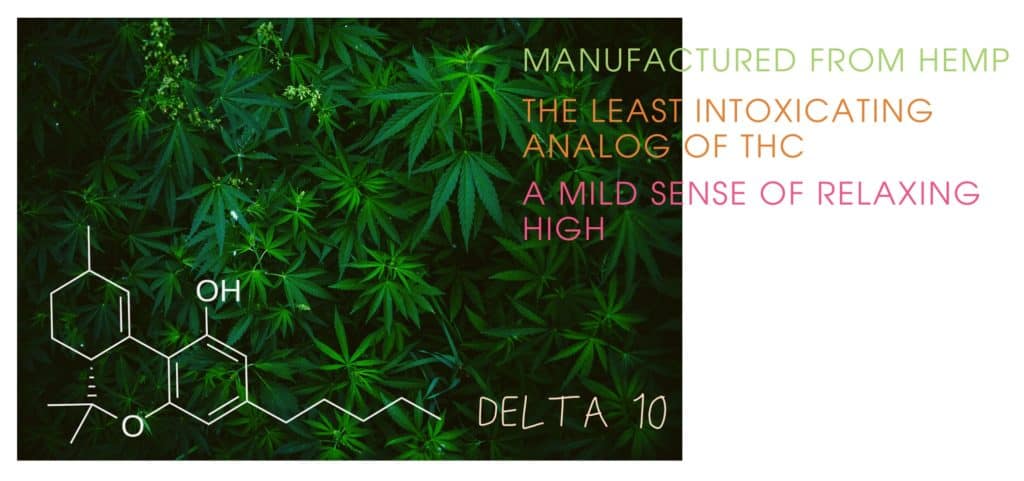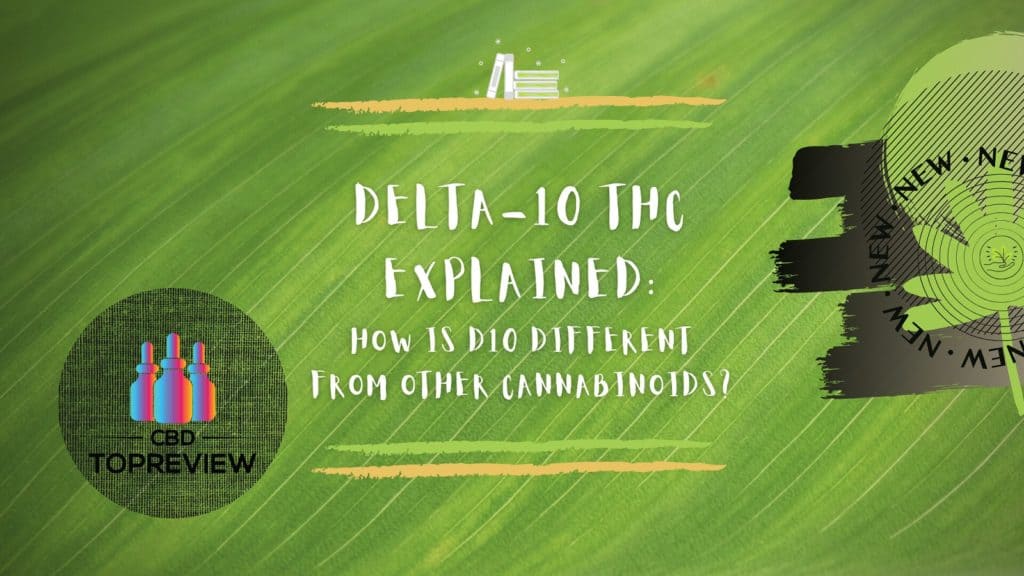Since the 2018 ‘Farm Bill,’ the demand for cannabinoids beyond THC and CBD has exploded. In addition, legalizing hemp-derived cannabinoids has opened the public’s interest in other cannabis compounds; the latest is Delta-10 THC.
In 2020, the industry experienced a wave of Delta-8 THC products, earning the attention of mainstream media and lawmakers around the United States. Delta-8 THC, also known as ‘diet weed,’ or ‘THC lite,’ created such a buzz because it could be produced from hemp and delivered a high similar to the federally banned cannabinoid, Delta-9 THC.
What is Delta-10 THC?
If you are unfamiliar with minor cannabinoids and didn’t know there were multiple analogs of THC, you aren’t alone. Most people weren’t aware that hemp and marijuana naturally possess trace amounts of Delta-8 and Delta-10 or that CBD can be converted into these compounds with some introductory chemistry.
Delta-10 THC is an analog of THC that has a low affinity with the cannabinoid receptors that create the psychoactive effects of marijuana. The hemp-derived compound is legal under the same circumstances as CBD, CBN, CBC, CBG, and dozens of other cannabinoids (minus Delta-9 THC).
Delta-10 vs. Delta-8
Delta-8 is also an analog of Delta-9 THC. The difference is the potency. D8 binds more effectively to CB receptors than D10 but not as well as Delta-9. Due to levels of CB activation, D9 produces the most intense high, followed by D8, and Delta-10 is the least intoxicating.
Want to know more about Delta-8?
Read our informational post about D8 and its effects on the human body
Activation at CB1 and CB2 Receptors
The interaction between Delta-9 THC and cannabinoid receptors CB1 and CB2 is still not fully understood. We know that when THC fits into the brain’s CB1 receptors and CB2 receptors throughout the body, a euphoric high is created because the chemical composition of our brain is thrown off.
Scientists have known that THC binds to CB1 and CB2 for decades, but according to LiveScience, they “have yet to decipher exactly what happens during this euphoria.”
We know that D10 interacts with CB1 and CB2 receptors at a lower affinity because the effects are dramatically decreased. But because Delta-10 and Delta-8 THC are so new, most of what we know about this interaction is based on the research done on the more well-known analog.
How is Delta-10 THC Made?
Delta-10 THC is manufactured from hemp, giving retailers the freedom to operate under much less regulation than D9. However, the process of creating D8 and D10 has caused the cannabis compounds controversy. Synthetic cannabinoids aren’t legal under the ‘Farm Bill,’ but the definition of a synthetic is debatable. Because D10 and D8 are derived from hemp, advocates for the innovative molecules suggest they aren’t synthetics, even they are converted from CBD using heat and acid.
For now, Delta-10 is still flying under the radar. Delta-8 products have been banned in numerous states but have also been upheld in others.

Benefits of Delta-10 THC
Research on Delta-10 THC is still basically non-existent. The benefits associated with D10 are the same as Delta-9 THC. Anecdotal accounts suggest that D10 produces a mild sense of euphoria that isn’t overwhelming enough to create paranoia or anxiety. Users get a lovely relaxing high that helps take the edge off.
How to Find High-Quality Delta-10 THC?
Delta-10 is available in gummies, vape cartridges, tinctures, and dabs. Some companies are even spraying D10 on hemp flower. Every infusion we’ve seen with CBD is likely available with Delta-8 and Delta-10. You can find D10 products online, but take the same precautions you would when buying CBD. Check for lab tests, look at reviews, and make sure there aren’t any questionable ingredients in the products before purchasing.







